A Review of Research on the Vacuum Plume
Abstract
:1. Introduction
2. Vacuum Plume of Chemical Thruster
2.1. Ground Test
2.2. Numerical Simulation
3. Vacuum Plume of Electrical Thruster
3.1. Ground Test
3.2. Numerical Simulation
4. Future Research
4.1. Fast Prediction of the Vacuum Plume Using Deep Learning
4.2. Plume-Surface Interaction
4.3. Plume–Lunar/Mars Regolith Interaction
5. Conclusions
Author Contributions
Funding
Institutional Review Board Statement
Informed Consent Statement
Data Availability Statement
Acknowledgments
Conflicts of Interest
References
- He, B.; Zhang, J.; Cai, G. Research on vacuum plume and its effects. Chin. J. Aeronaut. 2013, 26, 27–36. [Google Scholar] [CrossRef] [Green Version]
- He, B.; He, X.; Zhang, M.; Cai, G. Plume aerodynamic effects of cushion engine in lunar landing. Chin. J. Aeronaut. 2013, 26, 269–278. [Google Scholar] [CrossRef] [Green Version]
- Dettleff, G.; Grabe, M. Basics of Plume Impingement Analysis for Small Chemical and Cold Gas Thrusters. In Proceedings of the Models and Computational Methods for Rarefied Flows, RTO/NATO, Rhode St. Genese, Belgium, 24–28 January 2011. [Google Scholar]
- Lehrer, S. Microthrust engines for the investigation of spacecraft surface heating. J. Spacecr. Rockets 1966, 3, 983–988. [Google Scholar] [CrossRef]
- Trinks, H.; Hoffman, R. Experimental investigation of bipropellant exhaust plume flowfield, heating, and contamination, and comparison with the CONTAM computer model predictions. In Proceedings of the 18th Thermophysics Conference, Montreal, QC, Canada, 1–3 July 1983; American Institute of Aeronautics and Astronautics: Reston, VA, USA, 1983. [Google Scholar]
- Trinks, H.; Kaelsch, I. Exhaust plume effects of small thrusters on spacecraft surfaces. In Proceedings of the 22nd Thermophysics Conference, Honolulu, HI, USA, 8–10 June 1987; American Institute of Aeronautics and Astronautics: Reston, VA, USA, 1987. [Google Scholar]
- Grabe, M.; Soares, C.E. Status and future of research on plume induced contamination. In Proceedings of the 70th International Astronautical Congress, Washington, DC, USA, 21–25 October 2019; International Astronautical Federation: Paris, France, 2019. [Google Scholar]
- Whitmore, S.A. Plume Contamination Measurements of an Additively Printed, Green-Propellant Hybrid Thruster. J. Propuls. Power 2022, 38, 1–15. [Google Scholar] [CrossRef]
- He, X.; He, B.; Cai, G. Simulation of two-phase plume field of liquid thruster. Sci. China Technol. Sci. 2012, 55, 1739–1748. [Google Scholar] [CrossRef]
- French, E.P. Effect of rocket exhausts on infrared planet sensors. J. Spacecr. Rockets 1966, 3, 849–853. [Google Scholar] [CrossRef]
- Soares, C.; Olsen, R.; Steagall, C.; Huang, A.; Mikatarian, R.; Myers, B.; Koontz, S.; Worthy, E. Improvements in Modeling Thruster Plume Erosion Damage to Spacecraft Surfaces. In Proceedings of the 13th International Symposium on Materials in the Space, Pau, France, 22–26 June 2015; National Aeronautics and Space Administration: Washington, DC, USA, 2015. [Google Scholar]
- Bird, G.A. Molecular Gas Dynamics and the Direct Simulation of Gas Flows; Oxford University Press: Oxford, UK, 1994. [Google Scholar]
- Shen, C. Rarefied Gas Dynamics: Fundamentals, Simulations and Micro Flows; Springer Science & Business Media: Heidelberg, Germany, 2006. [Google Scholar]
- Boynton, F.P. Exhaust plumes from nozzles with wall boundary layers. J. Spacecr. Rockets 1968, 5, 1143–1147. [Google Scholar] [CrossRef]
- Shaw, L.; Hickman, R. Comparison of predicted and measured low-density plume impingement effects. J. Spacecr. Rockets 1969, 6, 1338–1341. [Google Scholar] [CrossRef]
- Arnett, G. Lunar Excursion Module RCS Engine Vacuum Chamber Contamination Study; Technical Report; National Aeronautics and Space Administration: Washington, DC, USA, 1969.
- Krewski, T.; Lacinski, T. Comparison of full-and sub-scale plume impingement tests in a vacuum. In Proceedings of the 6th Aerodynamics Testing Conference, Albuquerque, NM, USA, 10–12 March 1971; American Institute of Aeronautics and Astronautics: Reston, VA, USA, 1971. [Google Scholar]
- Clark, L.V. Experimental Investigation of Close-Range Rocket-Exhaust Impingement on Surfaces in a Vacuum; National Aeronautics and Space Administration: Washington, DC, USA, 1970.
- Cai, C. Theoretical and Numerical Studies of Plume Flows in Vacuum Chambers. Ph.D. Thesis, University of Michigan, Ann Arbor, MI, USA, 2005. [Google Scholar]
- Grabe, M.; Dettlef, G.; Hannemann, K. Comparison of computed free thruster plume expansion to experiments. In Proceedings of the Space Propulsion Conference 2014, Cologne, Germany, 19–22 May 2014; European Space Agency: Paris, France, 2014. [Google Scholar]
- Lee, K.H. Numerical comparison of exhaust plume flow behaviors of small monopropellant and bipropellant thrusters. PLoS ONE 2017, 12, e0176423. [Google Scholar] [CrossRef] [Green Version]
- Lee, K.H. Plume influence analysis of small bipropellant thruster on solar array of GEO satellite. PLoS ONE 2018, 13, e0199667. [Google Scholar] [CrossRef]
- Lee, K.H. Plume simulation of liquid apogee engine for GEO satellite using parallel DSMC method. Comput. Fluids 2020, 208, 104612. [Google Scholar] [CrossRef]
- Markelov, G.; Brand, R.; Ibler, G.; Supper, W. Numerical assessment of plume heat and mechanical loads and contamination on multi-layer insulation in hard vacuum. Vacuum 2012, 86, 889–894. [Google Scholar] [CrossRef]
- Bernard, F.; Iollo, A.; Puppo, G. Simulation of particle dynamics for rarefied flows: Backflow in thruster plumes. Eur. J.-Mech.-B Fluids 2017, 63, 25–38. [Google Scholar] [CrossRef] [Green Version]
- Lee, K.H. Numerical simulation on thermal and mass diffusion of MMH–NTO bipropellant thruster plume flow using global kinetic reaction model. Aerosp. Sci. Technol. 2019, 93, 104882. [Google Scholar] [CrossRef]
- Lee, K.H. Comparison study of exhaust plume impingement effects of small mono-and bipropellant thrusters using parallelized DSMC method. PLoS ONE 2017, 12, e0179351. [Google Scholar] [CrossRef] [Green Version]
- Dettleff, G. Plume flow and plume impingement in space technology. Prog. Aerosp. Sci. 1991, 28, 1–71. [Google Scholar] [CrossRef]
- Slbulkin, M.; Gallaher, W. Far-field approximation for a nozzle exhausting into a vacuum. AIAA J. 1963, 1, 1452–1453. [Google Scholar] [CrossRef]
- Draper, J.S.; Hill, J.A. Analytical approximation for the flow from a nozzle into a vacuum. J. Spacecr. Rockets 1966, 3, 1552–1554. [Google Scholar] [CrossRef]
- Luce, R.W.; Jarvinen, P.O. An approximate method for predicting plume sizes for nozzle flow into still air. AIAA J. 1968, 6, 182–183. [Google Scholar] [CrossRef]
- Maddox, A. Impingement of underexpanded plumes on adjacent surfaces. J. Spacecr. Rockets 1968, 5, 718–724. [Google Scholar] [CrossRef]
- Brook, J.W. Far field approximation for a nozzle exhausting into a vacuum. J. Spacecr. Rockets 1969, 6, 626–628. [Google Scholar] [CrossRef]
- Plähn, K.; Dettleff, G. Modelling of N2-thruster Plumes based on Experiments in STG. AIP Conf. Proc. 2001, 585, 848–855. [Google Scholar]
- Cai, C.; Sun, Q.; Vanderwyst, A. Analytical exact solutions for unsteady collisionless plume flows in a vacuum. Acta Astronaut. 2013, 91, 218–227. [Google Scholar] [CrossRef] [Green Version]
- Zhu, Y.; Zhong, C.; Xu, K. GKS and UGKS for High-Speed Flows. Aerospace 2021, 8, 141. [Google Scholar] [CrossRef]
- Cai, C. Gaskinetic modeling on dilute gaseous plume impingement flows. Aerospace 2016, 3, 43. [Google Scholar] [CrossRef] [Green Version]
- O’Reilly, D.; Herdrich, G.; Kavanagh, D.F. Electric propulsion methods for small satellites: A review. Aerospace 2021, 8, 22. [Google Scholar] [CrossRef]
- Miguel, S.; Kan, X.; Ningfei, W.; Ning, G.; Zun, Z. Ion engine grids: Function, main parameters, issues, configurations, geometries, materials and fabrication methods. Chin. J. Aeronaut. 2018, 31, 1635–1649. [Google Scholar] [CrossRef]
- Lev, D.; Myers, R.M.; Lemmer, K.M.; Kolbeck, J.; Koizumi, H.; Polzin, K. The technological and commercial expansion of electric propulsion. Acta Astronaut. 2019, 159, 213–227. [Google Scholar] [CrossRef]
- Potrivitu, G.C.; Sun, Y.; Rohaizat, M.W.A.b.; Cherkun, O.; Xu, L.; Huang, S.; Xu, S. A review of low-power electric propulsion research at the Space Propulsion Centre Singapore. Aerospace 2020, 7, 67. [Google Scholar] [CrossRef]
- Shang, S.; Cai, G.; Zhu, D.; He, B. An empirical formula for Ez in the modified Sigmund formula for low energy heavy ion bombardment. Vacuum 2016, 125, 192–204. [Google Scholar] [CrossRef]
- Hallouin, T.; Mazouffre, S. Far-field plume characterization of a 100-W class Hall thruster. Aerospace 2020, 7, 58. [Google Scholar] [CrossRef]
- Boyd, I.D. Review of hall thruster plume modeling. J. Spacecr. Rockets 2001, 38, 381–387. [Google Scholar] [CrossRef] [Green Version]
- Boyd, I.D. Numerical modeling of spacecraft electric propulsion thrusters. Prog. Aerosp. Sci. 2005, 41, 669–687. [Google Scholar] [CrossRef]
- Zhang, Z.; Zhang, Z.; Xu, S.; Ling, W.Y.L.; Ren, J.; Tang, H. Three-dimensional measurement of a stationary plasma plume with a Faraday probe array. Aerosp. Sci. Technol. 2021, 110, 106480. [Google Scholar] [CrossRef]
- Zhang, Z.; Tang, H.; Kong, M.; Zhang, Z.; Ren, J. Electron temperature measurement in Maxwellian non-isothermal beam plasma of an ion thruster. Rev. Sci. Instrum. 2015, 86, 23506. [Google Scholar] [CrossRef]
- Zhang, Z.; Tang, H.; Zhang, Z.; Wang, J.; Cao, S. A retarding potential analyzer design for keV-level ion thruster beams. Rev. Sci. Instrum. 2016, 87, 123510. [Google Scholar] [CrossRef]
- Liu, L.; Cai, G.; You, F.; Ren, X.; Zheng, H.; He, B. Improving the viability and versatility of the E× B probe with an active cooling system. Rev. Sci. Instrum. 2018, 89, 43502. [Google Scholar] [CrossRef]
- VanGilder, D.B.; Font, G.I.; Boyd, I.D. Hybrid Monte Carlo-particle-in-cell simulation of an ion thruster plume. J. Propuls. Power 1999, 15, 530–538. [Google Scholar] [CrossRef] [Green Version]
- Zheng, H.; Cai, G.; Wang, H.; Liu, L.; He, B. Three-dimensional particle simulation of ion thruster plume flows with EX-PWS. Plasma Sci. Technol. 2018, 20, 105501. [Google Scholar] [CrossRef] [Green Version]
- Johnson, I.K.; Santiago, G.; Li, J.; Baldwin, J. 100,000 hrs of On-Orbit Electric Propulsion and Maxar’s First Electric Orbit Raising. In Proceedings of the AIAA Scitech 2020 Forum, Orlando, FL, USA, 6–10 January 2020; American Institute of Aeronautics and Astronautics: Reston, VA, USA, 2020. [Google Scholar]
- Trottenberg, T.; Bansemer, F.; Böttcher, S.; Feili, D.; Henkel, H.; Hesse, M.; Kersten, H.; Krüger, T.; Laube, J.; Lazurenko, A.; et al. An in-flight plasma diagnostic package for spacecraft with electric propulsion. EPJ Tech. Instrum. 2021, 8, 16. [Google Scholar] [CrossRef]
- Zhang, M.; Cai, G.; Tang, Z.; He, B.; Zhang, W.; Shu, Y. Experimental and numerical research on the diversion effect of a conic flame deflector for a lunar module ascent stage. J. Aerosp. Eng. 2016, 29, 4016021. [Google Scholar] [CrossRef]
- Zhang, M.; Cai, G.; He, B.; Tang, Z.; Zhou, H. Experimental and numerical analysis of the heat flux characteristic of the plume of a 120-N thruster. Sci. China Technol. Sci. 2019, 62, 1854–1860. [Google Scholar] [CrossRef]
- Wu, J.; Cai, G.; He, B.; Zhou, H. Experimental and numerical investigations of vacuum plume interaction for dual hydrogen/oxygen thrusters. Vacuum 2016, 128, 166–177. [Google Scholar] [CrossRef]
- Grabe, M.; Dettleff, G.; Hannemann, K. Impact of nozzle separation on the plumes of two parallel thrusters. AIP Conf. Proc. 2016, 1786, 170005. [Google Scholar]
- Dettleff, G.; Plähn, K.; Dettleff, G.; Plaehn, K. Initial experimental results from the new DLR-high vacuum plume test facility STG. In Proceedings of the 33rd Joint Propulsion Conference and Exhibit, Seattle, WA, USA, 6–9 July 1997; American Institute of Aeronautics and Astronautics: Reston, VA, USA, 1997. [Google Scholar]
- Lutfy, F.; Vargo, S.; Muntz, E.; Ketsdever, A. The David P.Weaver Collaborative High Altitude Flow Facility’s CHAFF-4 for studies of spacecraft propulsion plumes and contamination. In Proceedings of the 34th AIAA/ASME/SAE/ASEE Joint Propulsion Conference and Exhibit, Cleveland, OH, USA, 13–15 July 1998; American Institute of Aeronautics and Astronautics: Reston, VA, USA, 1998. [Google Scholar]
- Wang, W.; Cai, G.; Zhou, J. Large-scale vacuum vessel design and finite element analysis. Chin. J. Aeronaut. 2012, 25, 189–197. [Google Scholar]
- Cai, G.; Ling, G.; He, B. An introduction to the novel vacuum plume effects experimental system. Sci. China Technol. Sci. 2016, 59, 953–960. [Google Scholar] [CrossRef]
- Plesik, E.; Koppang, R.; Simkin, D. Rocket-exhaust impingement on a flat plate at high vacuum. J. Spacecr. Rockets 1966, 3, 1650–1657. [Google Scholar] [CrossRef]
- Wu, J.; Bitter, M.; Cai, G.; He, B.; Kaehler, C. Investigation on aerodynamic force effect of vacuum plumes using pressure-sensitive paint technique and CFD-DSMC solution. Sci. China Technol. Sci. 2017, 60, 1058–1067. [Google Scholar] [CrossRef]
- Wu, J.; Kong, D.; Zhang, P.; Huang, F.; Cai, G. Characterization of pressure-sensitive paint based on mesoporous silica particles under near-vacuum conditions. Sens. Actuators A Phys. 2021, 330, 112844. [Google Scholar] [CrossRef]
- Wu, J.; Chen, Y.; Huang, F. Effects of a gaseous atmosphere on the pressure sensitivity and constancy of pressure-sensitive paints. IEEE Sens. J. 2022. [Google Scholar] [CrossRef]
- Wu, J.; Kong, D.; Huang, F.; Cai, G.; Shi, A.; Chen, Y. Pressure-sensitivity stability of poly [1-(trimethylsilyl)-1-propyne]-based pressure-sensitive paint for low-pressure conditions. Measurement 2022, 196, 111012. [Google Scholar] [CrossRef]
- Weng, H.; Cai, G.; Liu, L.; Zheng, H.; Shang, S.; He, B. A momentum flux measuring instrument with the variable-range for exhaust plume. AIP Adv. 2018, 8, 85027. [Google Scholar] [CrossRef] [Green Version]
- Benedikt, J.; Kersten, H.; Piel, A. Foundations of measurement of electrons, ions and species fluxes toward surfaces in low-temperature plasmas. Plasma Sources Sci. Technol. 2021, 30, 33001. [Google Scholar] [CrossRef]
- Varade, V.; Agrawal, A.; Prabhu, S.; Pradeep, A. Velocity measurement in low Reynolds and low Mach number slip flow through a tube. Exp. Therm. Fluid Sci. 2015, 60, 284–289. [Google Scholar] [CrossRef]
- Liu, L.; Nan, X.; Lin, F. Flow measurements near the open surfaces of single circumferential grooves in a low-speed axial compressor. Aerosp. Sci. Technol. 2018, 78, 531–541. [Google Scholar] [CrossRef]
- Yüceil, K.B. A comparison of PIV and interferometric Rayleigh scattering measurements in the near field of underexpanded sonic jets. Aerosp. Sci. Technol. 2017, 67, 31–40. [Google Scholar] [CrossRef]
- Song, A.; Qin, Z.; Li, J.; Li, M.; Huang, K.; Yang, Y.; Wang, N. Real-Time Plume Velocity Measurement of Solid Propellant Rocket Motors Using TDLAS Technique. Propellants Explos. Pyrotech. 2021, 46, 636–653. [Google Scholar] [CrossRef]
- Jiang, L.; Sislian, J. Velocity and density measurements in supersonic high-temperature exhaust plumes. AIAA J. 1998, 36, 1216–1222. [Google Scholar] [CrossRef]
- Hall, C.A.; Ramsey, M.C.; Knaus, D.A.; Pitz, R.W. Molecular tagging velocimetry in nitrogen with trace water vapor. Meas. Sci. Technol. 2017, 28, 85201. [Google Scholar] [CrossRef]
- Huffman, R.; Elliott, G. An experimental investigation of accurate particle tracking in supersonic, rarefied, axisymmetric jets. In Proceedings of the 47th AIAA Aerospace Sciences Meeting including The New Horizons Forum and Aerospace Exposition, Orlando, FL, USA, 5–8 January 2009; American Institute of Aeronautics and Astronautics: Reston, VA, USA, 2009. [Google Scholar]
- Ribarov, L.; Wehrmeyer, J.; Hu, S.; Pitz, R. Multiline hydroxyl tagging velocimetry measurements in reacting and nonreacting experimental flows. Exp. Fluids 2004, 37, 65–74. [Google Scholar] [CrossRef]
- Pitz, R.W.; Lahr, M.D.; Douglas, Z.W.; Wehrmeyer, J.A.; Hu, S.; Carter, C.D.; Hsu, K.Y.; Lum, C.; Koochesfahani, M.M. Hydroxyl tagging velocimetry in a supersonic flow over a cavity. Appl. Opt. 2005, 44, 6692–6700. [Google Scholar] [CrossRef]
- Ramsey, M.; Pitz, R.; Jenkins, T.; Matsutomi, Y.; Yoon, C.; Anderson, W. Planar 2D velocity measurements in the cap shock pattern of a thrust optimized rocket nozzle. Shock Waves 2012, 22, 39–46. [Google Scholar] [CrossRef]
- Danehy, P.M.; O’Byrne, S.; Frank, A.; Houwing, P.; Fox, J.S.; Smith, D.R. Flow-tagging velocimetry for hypersonic flows using fluorescence of nitric oxide. AIAA J. 2003, 41, 263–271. [Google Scholar] [CrossRef]
- Zhang, S.; Yu, X.; Yan, H.; Huang, H.; Liu, H. Molecular tagging velocimetry of NH fluorescence in a high-enthalpy rarefied gas flow. Appl. Phys. B Lasers Opt. 2017, 123, 1–7. [Google Scholar] [CrossRef] [Green Version]
- Lackner, M. Tunable diode laser absorption spectroscopy (TDLAS) in the process industries—A review. Rev. Chem. Eng. 2007, 23, 65–147. [Google Scholar] [CrossRef]
- Sappey, A.D.; Masterson, P.; Howell, J.; Estes, M.; Owenby, D.; Sutherland, L. Tomographic reconstruction of multipath tunable diode laser spectroscopy measurements in turbine engines. J. Propuls. Power 2014, 30, 24–28. [Google Scholar] [CrossRef]
- Su, Y.; Cai, G.; Ling, G.; He, B.; Wu, C. Low-pressure adsorption isotherms of CO2 on low-temperature surface measured on a quartz crystal microbalance. Vacuum 2019, 168, 108851. [Google Scholar] [CrossRef]
- Wu, C.; He, B.; Su, Y.; Ling, G.; Cai, G. Adsorption Isotherms of Low-Pressure H2O on a Low-Temperature Surface Measured by a Quartz Crystal Microbalance. ACS Omega 2020, 5, 26673–26681. [Google Scholar] [CrossRef]
- Araneo, L.; Soare, V.; Payri, R.; Shakal, J. Setting up a PDPA system for measurements in a Diesel spray. J. Phys. Conf. Ser. 2006, 45, 85. [Google Scholar] [CrossRef] [Green Version]
- Sijs, R.; Kooij, S.; Holterman, H.; Van De Zande, J.; Bonn, D. Drop size measurement techniques for sprays: Comparison of image analysis, phase Doppler particle analysis, and laser diffraction. AIP Adv. 2021, 11, 15315. [Google Scholar] [CrossRef]
- McPhail, Y.M. An experimental rocket model and numerical plume boundary studies for under-expanded flow. Ph.D. Thesis, The University of New South Wales, Kensington, NSW, Australia, 2011. [Google Scholar]
- Fisher, S.; Bharathan, D. Glow-discharge flow visualization in low-density free jets. J. Spacecr. Rockets 1973, 10, 658–662. [Google Scholar] [CrossRef]
- Han, Y.; Cai, G.B.; Xu, X.; Bruno, R.; Abdelkrim, B. A conditioned level-set method with block-division strategy to flame front extraction based on OH-PLIF measurements. Chin. Phys. B 2014, 23, 58901. [Google Scholar] [CrossRef]
- Han, Y.; Cai, G.B.; Wang, H.X.; Bruno, R.; Abdelkrim, B. Flow characterization and dilution effects of N2 and CO2 on premixed CH4/air flames in a swirl-stabilized combustor. Chin. Phys. B 2014, 23, 34704. [Google Scholar] [CrossRef]
- Dai, J.; Cai, G.; Zhang, Y.; Yu, N. Experimental investigations of coaxial injectors in a laboratory-scale rocket combustor. Aerosp. Sci. Technol. 2016, 59, 41–51. [Google Scholar] [CrossRef]
- Dai, J.; Cai, G.; Zhang, Y.; Yu, N. Experimental and numerical investigation of combustion characteristics on GO2/GH2 shear coaxial injector. Aerosp. Sci. Technol. 2018, 77, 725–732. [Google Scholar] [CrossRef]
- Tang, Z.; He, B.; Cai, G. Investigation on a coupled Navier–Stokes–Direct Simulation Monte Carlo method for the simulation of plume flowfield of a conical nozzle. Int. J. Numer. Methods Fluids 2014, 76, 95–108. [Google Scholar] [CrossRef]
- Yang, Z.; Tang, Z.Y.; Cai, G.B.; He, B.J. Development of a coupled NS-DSMC method for the simulation of plume impingement effects of space thrusters. Thermophys. Aeromechanics 2017, 24, 835–847. [Google Scholar] [CrossRef]
- Cai, G.B.; Tang, Z.Y.; Wei, X.Q. Investigation on the Interface Smoothing of Coupled N–S/DSMC Method Using Image Processing Filters. Adv. Astronaut. Sci. Technol. 2018, 1, 221–227. [Google Scholar] [CrossRef] [Green Version]
- Bird, G. The DS2V/3V program suite for DSMC calculations. AIP Conf. Proc. 2005, 762, 541–546. [Google Scholar]
- Boyd, I.D. Conservative species weighting scheme for the direct simulation Monte Carlo method. J. Thermophys. Heat Transf. 1996, 10, 579–585. [Google Scholar] [CrossRef]
- Rader, D.; Gallis, M.; Torczynski, J.; Wagner, W. Direct simulation Monte Carlo convergence behavior of the hard-sphere-gas thermal conductivity for Fourier heat flow. Phys. Fluids 2006, 18, 77102. [Google Scholar] [CrossRef]
- Ren, X.; Yuan, J.; He, B.; Zhang, M.; Cai, G. Grid criteria for numerical simulation of hypersonic aerothermodynamics in transition regime. J. Fluid Mech. 2019, 881, 585–601. [Google Scholar] [CrossRef]
- Cai, G.; Ren, X.; He, B.; Tang, Z.; Yuan, J. The dependence of transport coefficient on spatial dimensions and grid shape in the direct simulation Monte Carlo based on Green–Kubo relation. Phys. Fluids 2020, 32, 42006. [Google Scholar]
- LeBeau, G.; Lumpkin Iii, F. Application highlights of the DSMC Analysis Code (DAC) software for simulating rarefied flows. Comput. Methods Appl. Mech. Eng. 2001, 191, 595–609. [Google Scholar] [CrossRef]
- Stewart, B.; Lumpkin, F., III. Axisymmetric Plume Simulations with NASA’s DSMC Analysis Code; Technical Report; National Aeronautics and Space Administration: Washington, DC, USA, 2012.
- Giordano, D.; Ivanov, M.; Kashkovsky, A.; Markelov, G.; Tumino, G.; Koppenwallner, G. Application of numerical multizone approach to the study of satellite thruster plumes. J. Spacecr. Rockets 1998, 35, 502–508. [Google Scholar] [CrossRef]
- Dietrich, S.; Boyd, I. A scalar optimized parallel implementation of the DSMC method. In Proceedings of the 32nd Aerospace Sciences Meeting and Exhibit, Reno, NV, USA, 10–13 January 1994; American Institute of Aeronautics and Astronautics: Reston, VA, USA, 1994. [Google Scholar]
- Tseng, K.C.; Hu, L.H.; Kuo, T.C.; Chen, Y.S.; Lee, U.M.; Wu, J.S. Disturbance analysis from plume impingement by using the parallel DSMC Code (PDSC). In Proceedings of the 39th AIAA Thermophysics Conference, Miami, FL, USA, 25–28 June 2007; American Institute of Aeronautics and Astronautics: Reston, VA, USA, 2007. [Google Scholar]
- Simpson, H.; Wallace, N.; Clark, S.; Mundy, D. A description of the new 3.8 m diameter high power electric propulsion test facility at QinetiQ, Farnborough, UK. In Proceedings of the 28th International Electric Propulsion Conference, Toulouse, France, 17–21 March 2003; Electric Rocket Propulsion Society: Gainesville, VA, USA, 2003. [Google Scholar]
- Scortecci, F.; Bonelli, E.; Michelozzi, B.; Saito, F.; Scaranzin, S.; Turco, A. Performance of a large vacuum facility for spacecraft propulsion testing. In Proceedings of the 4th International Spacecraft Propulsion Conference, Sardinia, Italy, 2–9 June 2004; European Space Agency: Paris, France, 2004. [Google Scholar]
- Saverdi, M.; Signori, M.; Milaneschi, L.; Cesari, U.; Biagioni, L. The IV10 space simulator for high power electric propulsion testing: Performance improvements and operation status. In Proceedings of the 30th International Electric Propulsion Conference, Florence, Italy, 17–20 September 2007; Electric Rocket Propulsion Society: Gainesville, VA, USA, 2007. [Google Scholar]
- Shang, S.; Cai, G.; Zhu, D.; He, B. Design of double-layer anti-sputtering targets for plume effects experimental system. Sci. China Technol. Sci. 2016, 59, 1265–1275. [Google Scholar] [CrossRef]
- Garner, C.; Polk, J.; Brophy, J.; Goodfellow, K. Methods for cryopumping xenon. In Proceedings of the 32nd Joint Propulsion Conference and Exhibit, Lake Buena Vista, FL, USA, 1–3 July 1996; American Institute of Aeronautics and Astronautics: Reston, VA, USA, 1996. [Google Scholar]
- Spektor, R. Analytical Pumping Speed Models for Electric Propulsion Vacuum Facilities. J. Propuls. Power 2021, 37, 391–399. [Google Scholar] [CrossRef]
- Brown, D.L.; Walker, M.L.; Szabo, J.; Huang, W.; Foster, J.E. Recommended practice for use of Faraday probes in electric propulsion testing. J. Propuls. Power 2017, 33, 582–613. [Google Scholar] [CrossRef] [Green Version]
- Bustos, A.; Juarez, A.; De Urquijo, J.; Muñoz, M. An automated Langmuir probe controller for plasma characterization. Meas. Sci. Technol. 2016, 27, 87002. [Google Scholar] [CrossRef]
- Oh, S.J.; Choi, I.J.; Kim, J.Y.; Chung, C.W. Double probe diagnostics based on harmonic current detection for electron temperature and electropositive ion flux measurement in RF plasmas. Meas. Sci. Technol. 2012, 23, 85001. [Google Scholar] [CrossRef]
- Bekkeng, T.; Jacobsen, K.; Bekkeng, J.; Pedersen, A.; Lindem, T.; Lebreton, J.; Moen, J. Design of a multi-needle Langmuir probe system. Meas. Sci. Technol. 2010, 21, 85903. [Google Scholar] [CrossRef]
- Lobbia, R.B.; Beal, B.E. Recommended practice for use of Langmuir probes in electric propulsion testing. J. Propuls. Power 2017, 33, 566–581. [Google Scholar] [CrossRef]
- Kim, S.W. Experimental Investigations of Plasma Parameters and Species-Dependent Ion Energy Distribution in the Plasma Exhaust Plume of a Hall Thruster. Ph.D. Thesis, University of Michigan, Ann Arbor, MI, USA, 1999. [Google Scholar]
- Shastry, R.; Hofer, R.R.; Reid, B.M.; Gallimore, A.D. Method for analyzing E× B probe spectra from Hall thruster plumes. Rev. Sci. Instrum. 2009, 80, 63502. [Google Scholar] [CrossRef] [Green Version]
- Farnell, C.C.; Farnell, C.C.; Farnell, S.C.; Williams, J.D. Recommended practice for use of electrostatic analyzers in electric propulsion testing. J. Propuls. Power 2017, 33, 638–658. [Google Scholar] [CrossRef]
- Chen, X.; He, B.; Gu, Z.; Geng, H.; Guo, N.; Zhao, Y.; Shi, K.; Tian, K.; Chen, T.; Ma, Y. Investigation into the thermal effect of the LIPS-200 ion thruster plume. Plasma Sci. Technol. 2022, 24, 74003. [Google Scholar]
- Weng, H.; Cai, G.; Liu, L.; Zheng, H.; Zhang, M.; Zhang, B.; He, B. Modifying the theoretical model of the target indirect measurement method for measuring the thrust of electric propulsion. Meas. Sci. Technol. 2021, 32, 85301. [Google Scholar] [CrossRef]
- Zhang, Z.; Zhang, Z.; Wang, Y.; Zhang, G.; Qi, J.; Liu, J.; Tang, H.; Cao, J. Simultaneous experimental verification of indirect thrust measurement method based on Hall-effect thruster and plasma plume. Vacuum 2022, 204, 111384. [Google Scholar]
- Shang, S.; Xiang, S.; Jiang, L.; Wang, W.; He, B.; Weng, H. Sputtering distribution of lips200 ion thruster plume. Acta Astronaut. 2019, 160, 7–14. [Google Scholar] [CrossRef]
- Kempkens, H.; Uhlenbusch, J. Scattering diagnostics of low-temperature plasmas (Rayleigh scattering, Thomson scattering, CARS). Plasma Sources Sci. Technol. 2000, 9, 492. [Google Scholar] [CrossRef]
- Zhu, X.M.; Pu, Y.K. Using OES to determine electron temperature and density in low-pressure nitrogen and argon plasmas. Plasma Sources Sci. Technol. 2008, 17, 24002. [Google Scholar] [CrossRef]
- Akatsuka, H. Optical Emission Spectroscopic (OES) analysis for diagnostics of electron density and temperature in non-equilibrium argon plasma based on collisional-radiative model. Adv. Phys. X 2019, 4, 1592707. [Google Scholar] [CrossRef] [Green Version]
- Nauschütt, B.T.; Chen, L.; Holste, K.; Klar, P.J. Non-invasive assessment of plasma parameters inside an ion thruster combining optical emission spectroscopy and principal component analysis. EPJ Tech. Instrum. 2021, 8, 13. [Google Scholar] [CrossRef]
- Nauschütt, B.; Chen, L.; Holste, K.; Klar, P.J. Combination of optical emission spectroscopy and multivariate data analysis techniques as a versatile non-invasive tool for characterizing xenon/krypton mixed gas plasma inside operating ion thrusters. J. Appl. Phys. 2022, 131, 53301. [Google Scholar] [CrossRef]
- Vincent, B.; Tsikata, S.; Mazouffre, S.; Minea, T.; Fils, J. A compact new incoherent Thomson scattering diagnostic for low-temperature plasma studies. Plasma Sources Sci. Technol. 2018, 27, 55002. [Google Scholar] [CrossRef]
- Yamashita, Y.; Tsukizaki, R.; Kinefuchi, K.; Koda, D.; Tani, Y.; Nishiyama, K. Neutral ground state particle density measurement of xenon plasma in microwave cathode by two-photon laser-induced fluorescence spectroscopy. Vacuum 2019, 168, 108846. [Google Scholar] [CrossRef]
- Liebeskind, J.G.; Hanson, R.K.; Cappelli, M.A. Laser-induced fluorescence diagnostic for temperature and velocity measurements in a hydrogen arcjet plume. Appl. Opt. 1993, 32, 6117–6127. [Google Scholar] [CrossRef]
- Mazouffre, S. Laser-induced fluorescence diagnostics of the cross-field discharge of Hall thrusters. Plasma Sources Sci. Technol. 2012, 22, 13001. [Google Scholar] [CrossRef]
- Young, C.; Fabris, A.L.; MacDonald-Tenenbaum, N.; Hargus, W.; Cappelli, M. Time-resolved laser-induced fluorescence diagnostics for electric propulsion and their application to breathing mode dynamics. Plasma Sources Sci. Technol. 2018, 27, 94004. [Google Scholar] [CrossRef] [Green Version]
- Han, X.; Zhang, Z.; Chen, Z.; Marano, M.; Tang, H.; Cao, J. High-spatial-resolution image reconstruction-based method for measuring electron temperature and density of the very near field of an applied-field magnetoplasmadynamic thruster. J. Phys. D Appl. Phys. 2021, 54, 135203. [Google Scholar] [CrossRef]
- Kim, J.; Lee, D.; Doh, G.; Park, S.; Kim, H.; Choe, W. Three-dimensional tomographically reconstructed optical emission profiles of Hall thruster plasmas. Plasma Sources Sci. Technol. 2022, 31, 15013. [Google Scholar] [CrossRef]
- Buneman, O. Dissipation of currents in ionized media. Phys. Rev. 1959, 115, 503. [Google Scholar] [CrossRef]
- Dawson, J. One-dimensional plasma model. The Phys. Fluids 1962, 5, 445–459. [Google Scholar] [CrossRef]
- Ferguson, D.; Gardner, B.; Kuharski, R.; Davis, V. Electric propulsion interactions code (EPIC): Recent enhancements and goals for future capabilities. In Proceedings of the 45th AIAA Aerospace Sciences Meeting and Exhibit, Reno, NV, USA, 8–11 January 2007; American Institute of Aeronautics and Astronautics: Reston, VA, USA, 2007. [Google Scholar]
- Roussel, J.F.; Rogier, F.; Dufour, G.; Mateo-Velez, J.C.; Forest, J.; Hilgers, A.; Rodgers, D.; Girard, L.; Payan, D. SPIS open-source code: Methods, capabilities, achievements, and prospects. IEEE Trans. Plasma Sci. 2008, 36, 2360–2368. [Google Scholar] [CrossRef]
- Cai, G.; Zheng, H.; Liu, L.; Ren, X.; He, B. Three-dimensional particle simulation of ion thruster plume impingement. Acta Astronaut. 2018, 151, 645–654. [Google Scholar] [CrossRef]
- Zheng, H.; Cai, G.; Liu, L.; Shang, S.; He, B. Three-dimensional particle simulation of back-sputtered carbon in electric propulsion test facility. Acta Astronaut. 2017, 132, 161–169. [Google Scholar] [CrossRef]
- Liu, L.; Cai, G.; Zheng, H.; Shang, S.; He, B. Measurement of the momentum accommodation coefficient for the interactions between electric thruster plume and a solid surface. Phys. Plasmas 2020, 27, 53511. [Google Scholar] [CrossRef]
- Cai, G.; Zhang, B.; He, B.; Weng, H.; Liu, L. Research on the intelligent computation of vacuum plume (in Chinese). Acta Aeronaut. Astronaut. Sin. 2022, 43, 527352. [Google Scholar]
- Sekar, V.; Jiang, Q.; Shu, C.; Khoo, B.C. Fast flow field prediction over airfoils using deep learning approach. Phys. Fluids 2019, 31, 57103. [Google Scholar] [CrossRef]
- Hui, X.; Bai, J.; Wang, H.; Zhang, Y. Fast pressure distribution prediction of airfoils using deep learning. Aerosp. Sci. Technol. 2020, 105, 105949. [Google Scholar] [CrossRef]
- Wang, Y.; Liu, T.; Zhang, D.; Xie, Y. Dual-convolutional neural network based aerodynamic prediction and multi-objective optimization of a compact turbine rotor. Aerosp. Sci. Technol. 2021, 116, 106869. [Google Scholar] [CrossRef]
- Cai, G.; Zhang, B.; Liu, L.; Weng, H.; Wang, W.; He, B. Fast vacuum plume prediction using a convolutional neural networks-based direct simulation Monte Carlo method. Aerosp. Sci. Technol. 2022, 129, 107852. [Google Scholar] [CrossRef]
- Trott, W.M.; Castañeda, J.N.; Torczynski, J.R.; Gallis, M.A.; Rader, D.J. An experimental assembly for precise measurement of thermal accommodation coefficients. Rev. Sci. Instrum. 2011, 82, 35120. [Google Scholar] [CrossRef] [PubMed]
- Shuvalov, V.A. Transfer of the momentum of gas ions to the surface of a solid. J. Appl. Mech. Tech. Phys. 1984, 25, 351–358. [Google Scholar] [CrossRef]
- Shuvalov, V.A. Transfer of gas-ion momentum and energy to an electrically conductive surface partially coated by a thin dielectric layer. J. Appl. Mech. Tech. Phys. 1986, 27, 478–485. [Google Scholar] [CrossRef]
- Corey, R.L.; Snyder, J.S.; Price, X.; Malone, S.P.; Randolph, T.M. Hall thruster plume model for spacecraft impingement torque: Development and validation. J. Spacecr. Rockets 2008, 45, 766–775. [Google Scholar] [CrossRef]
- Wang, S.; Thynell, S. An experimental study on the hypergolic interaction between monomethylhydrazine and nitric acid. Combust. Flame 2012, 159, 438–447. [Google Scholar] [CrossRef]
- Saad, M.A.; Detweiler, M.B.; Sweeney, M.A. Analysis of reaction products of nitrogen tetroxide with hydrazines under nonignition conditions. AIAA J. 1972, 10, 1073–1078. [Google Scholar] [CrossRef]
- Liu, C.K.; Glassford, A. Contamination effect of MMH/N2O4 rocket plume product deposit. J. Spacecr. Rockets 1981, 18, 306–311. [Google Scholar] [CrossRef]
- Bonn, O.d.; Hammerl, A.; Klapötke, T.M.; Mayer, P.; Piotrowski, H.; Zewen, H. Plume deposits from bipropellant rocket engines: Methylhydrazinium nitrate and N, N-dimethylhydrazinium nitrate. Z. fur Anorg. Allg. Chem. 2001, 627, 2011–2015. [Google Scholar] [CrossRef]
- Tsai, P.; Pacheco, S.; Pirat, C.; Lefferts, L.; Lohse, D. Drop impact upon micro-and nanostructured superhydrophobic surfaces. Langmuir 2009, 25, 12293–12298. [Google Scholar] [CrossRef] [Green Version]
- Tsai, P.; CA van der Veen, R.; van de Raa, M.; Lohse, D. How micropatterns and air pressure affect splashing on surfaces. Langmuir 2010, 26, 16090–16095. [Google Scholar] [CrossRef] [PubMed] [Green Version]
- Tsai, P.; Hendrix, M.H.; Dijkstra, R.R.; Shui, L.; Lohse, D. Microscopic structure influencing macroscopic splash at high Weber number. Soft Matter 2011, 7, 11325–11333. [Google Scholar] [CrossRef]
- Josserand, C.; Thoroddsen, S.T. Drop impact on a solid surface. Annu. Rev. Fluid Mech. 2016, 48, 365–391. [Google Scholar] [CrossRef] [Green Version]
- Liu, L.; Cai, G.; Tsai, P.A. Drop impact on heated nanostructures. Langmuir 2020, 36, 10051–10060. [Google Scholar] [CrossRef] [PubMed]
- Liu, L.; Zhang, Y.; Cai, G.; Tsai, P.A. High-speed dynamics and temperature variation during drop impact on a heated surface. Int. J. Heat Mass Transf. 2022, 189, 122710. [Google Scholar] [CrossRef]
- Land, N.S.; Clark, L.V. Experimental Investigation of Jet Impingement on Surfaces of Fine Particles in a Vacuum Environment; National Aeronautics and Space Administration: Washington, DC, USA, 1965.
- Land, N.S.; Scholl, H.F. Scaled Lunar Module Jet Erosion Experiments; National Aeronautics and Space Administration: Washington, DC, USA, 1969.
- Morris, A.B.; Goldstein, D.B.; Varghese, P.L.; Trafton, L.M. Approach for modeling rocket plume impingement and dust dispersal on the moon. J. Spacecr. Rockets 2015, 52, 362–374. [Google Scholar] [CrossRef]
- You, J.; Zhang, X.; Zhang, H.; Li, C.; Xu, Y.; Yan, Q.; Yu, H.; Liu, J.; Li, Y.; Wang, Y.; et al. Analysis of plume–lunar surface interaction and soil erosion during the Chang’E-4 landing process. Acta Astronaut. 2021, 185, 337–351. [Google Scholar] [CrossRef]
- He, X.; He, B.; Cai, G. Simulation of rocket plume and lunar dust using DSMC method. Acta Astronaut. 2012, 70, 100–111. [Google Scholar] [CrossRef]
- Li, Y.; Ren, D.; Bo, Z.; Huang, W.; Ye, Q.; Cui, Y. Gas-particle two-way coupled method for simulating the interaction between a rocket plume and lunar dust. Acta Astronaut. 2019, 157, 123–133. [Google Scholar] [CrossRef]
- Bo, Z.; Feng, Y.; Huang, W.; Cui, Y. Diffusion phenomenon of lunar soil particles under a plume in a vacuum environment by numerical simulation. Acta Astronaut. 2020, 171, 403–414. [Google Scholar] [CrossRef]
- Bo, Z.; Xie, Y.; Li, Y.; Yu, W.; Cui, Y. Collision phenomenon of lunar-soil particles under engine plume in a vacuum by numerical study. Acta Astronaut. 2021, 189, 615–623. [Google Scholar] [CrossRef]
- Zhang, H.; Li, C.; You, J.; Zhang, X.; Wang, Y.; Chen, L.; Fu, Q.; Zhang, B.; Wang, Y. The Investigation of Plume-Regolith Interaction and Dust Dispersal during Chang’E-5 Descent Stage. Aerospace 2022, 9, 358. [Google Scholar] [CrossRef]
- Capecelatro, J. Modeling high-speed gas–particle flows relevant to spacecraft landings. Int. J. Multiph. Flow 2022, 150, 104008. [Google Scholar] [CrossRef]
- Diaz-Lopez, M.X.; Gorman, M.; Rubio, J.S.; Ni, R. Plume-surface Interaction Physics Focused Ground Test 1: Diagnostics and Preliminary Results. In Proceedings of the AIAA SCITECH 2022 Forum, San Diego, CA, USA, 3–7 January 2022; American Institute of Aeronautics and Astronautics: Reston, VA, USA, 2022. [Google Scholar]
- Rubio, J.S.; Gorman, M.; Diaz-Lopez, M.X.; Ni, R. Plume-Surface Interaction Physics Focused Ground Test 1: Setup and Preliminary Results. In Proceedings of the AIAA SCITECH 2022 Forum, San Diego, CA, USA, 3–7 January 2022; American Institute of Aeronautics and Astronautics: Reston, VA, USA, 2022. [Google Scholar]
- Korzun, A.M.; Eberhart, C.J.; West, J.; Liever, P.; Weaver, A.; Mantovani, J.; Langton, A.; Kemmerer, B.; Atkins, A. Design of a Subscale, Inert Gas Test for Plume-Surface Interactions in a Reduced Pressure Environment. In Proceedings of the AIAA SCITECH 2022 Forum, San Diego, CA, USA, 3–7 January 2022; American Institute of Aeronautics and Astronautics: Reston, VA, USA, 2022. [Google Scholar]
- Eberhart, C.J.; West, J.; Korzun, A.M. Overview of Plume-Surface Interaction Data from Subscale Inert Gas Testing at NASA MSFC Test Stand 300 Vacuum Facilities. In Proceedings of the AIAA SCITECH 2022 Forum, San Diego, CA, USA, 3–7 January 2022; American Institute of Aeronautics and Astronautics: Reston, VA, USA, 2022. [Google Scholar]











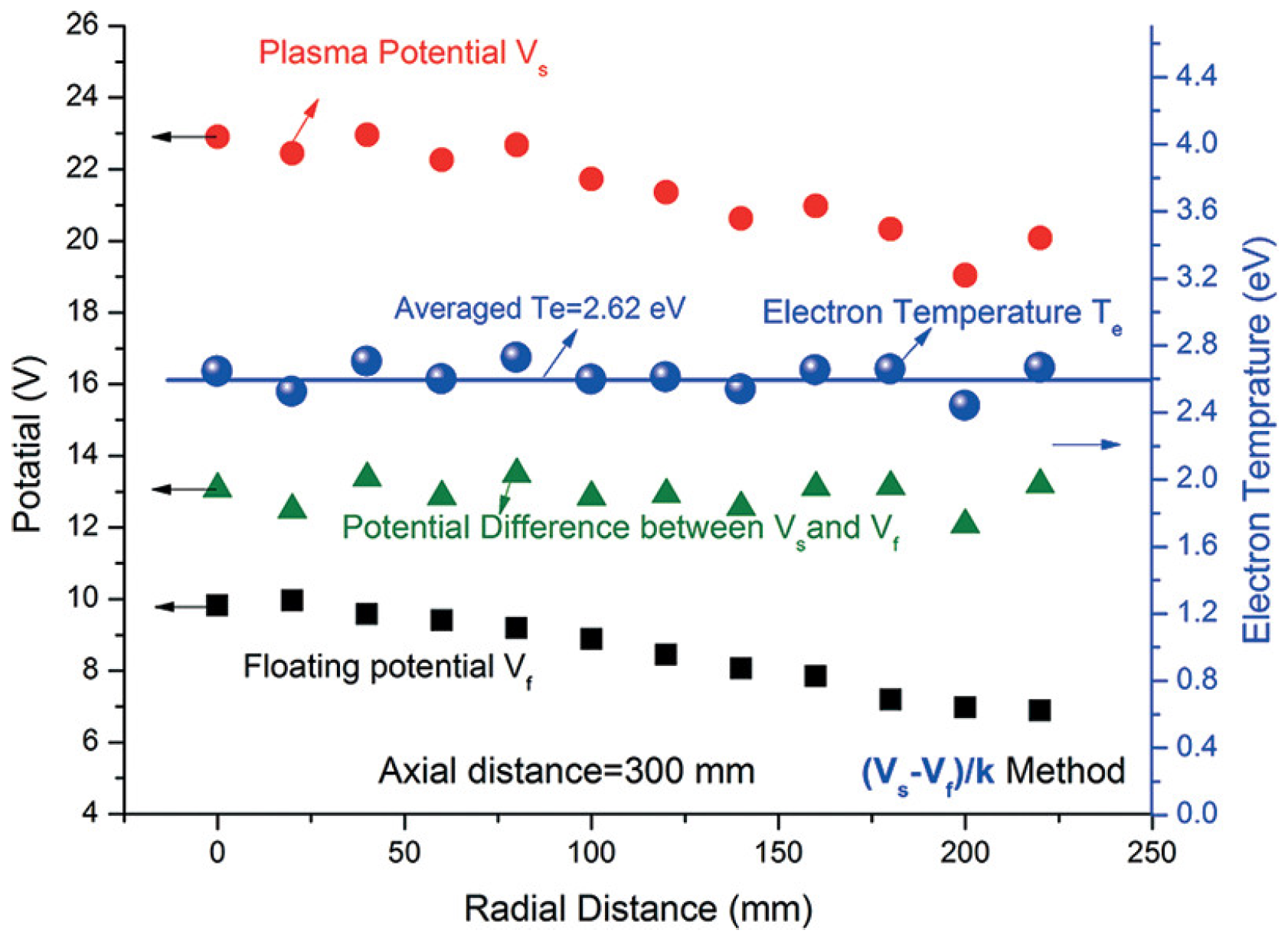
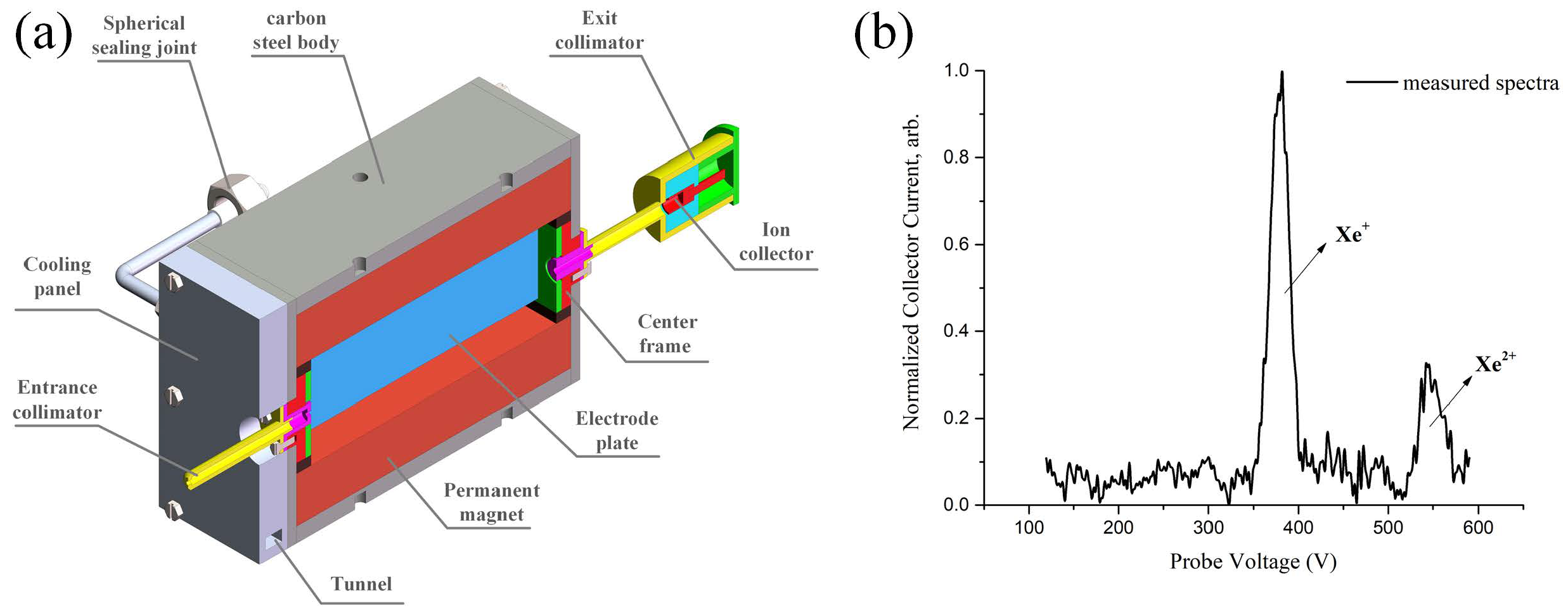
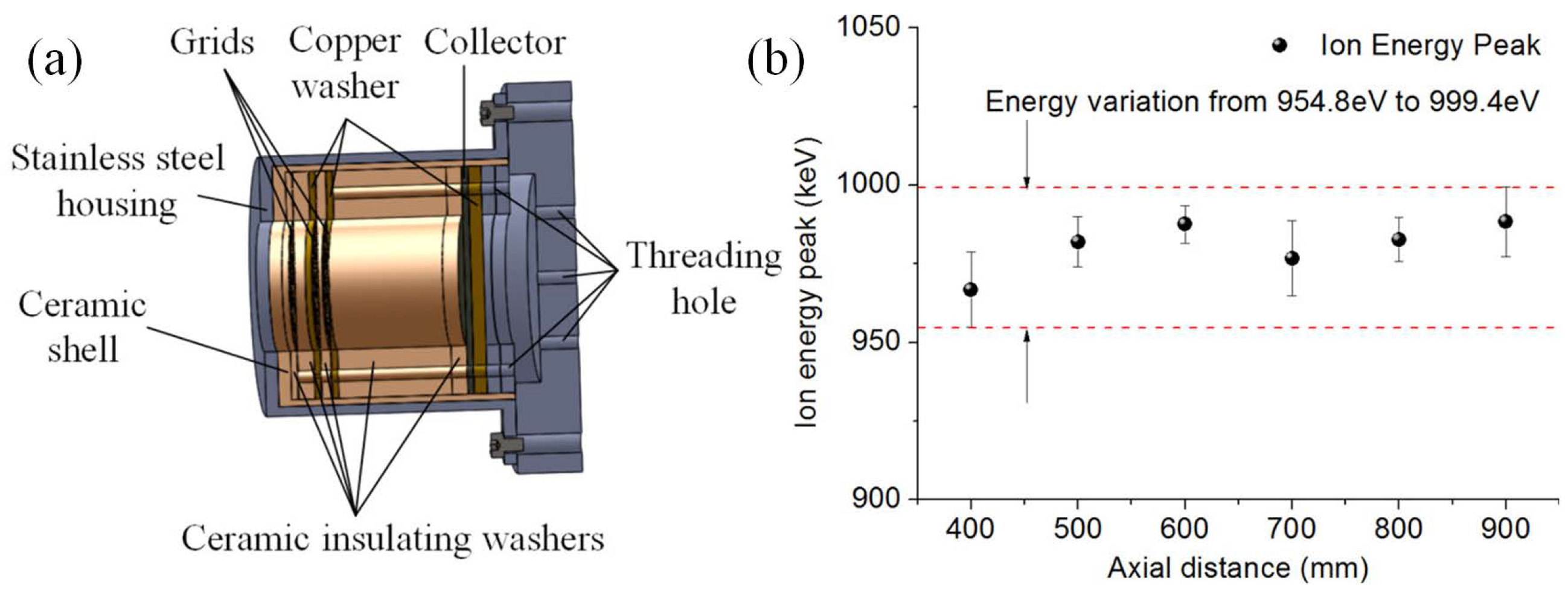


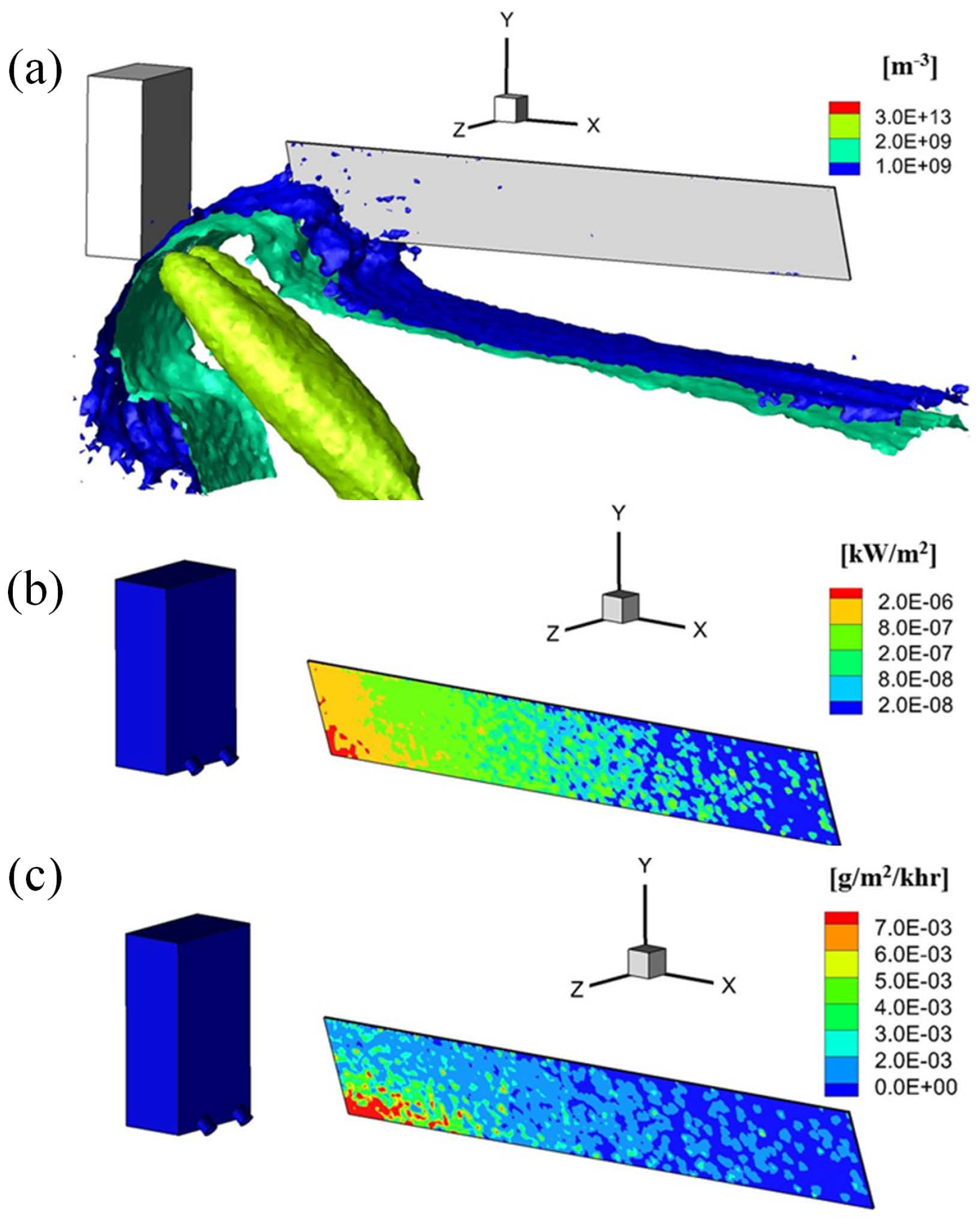

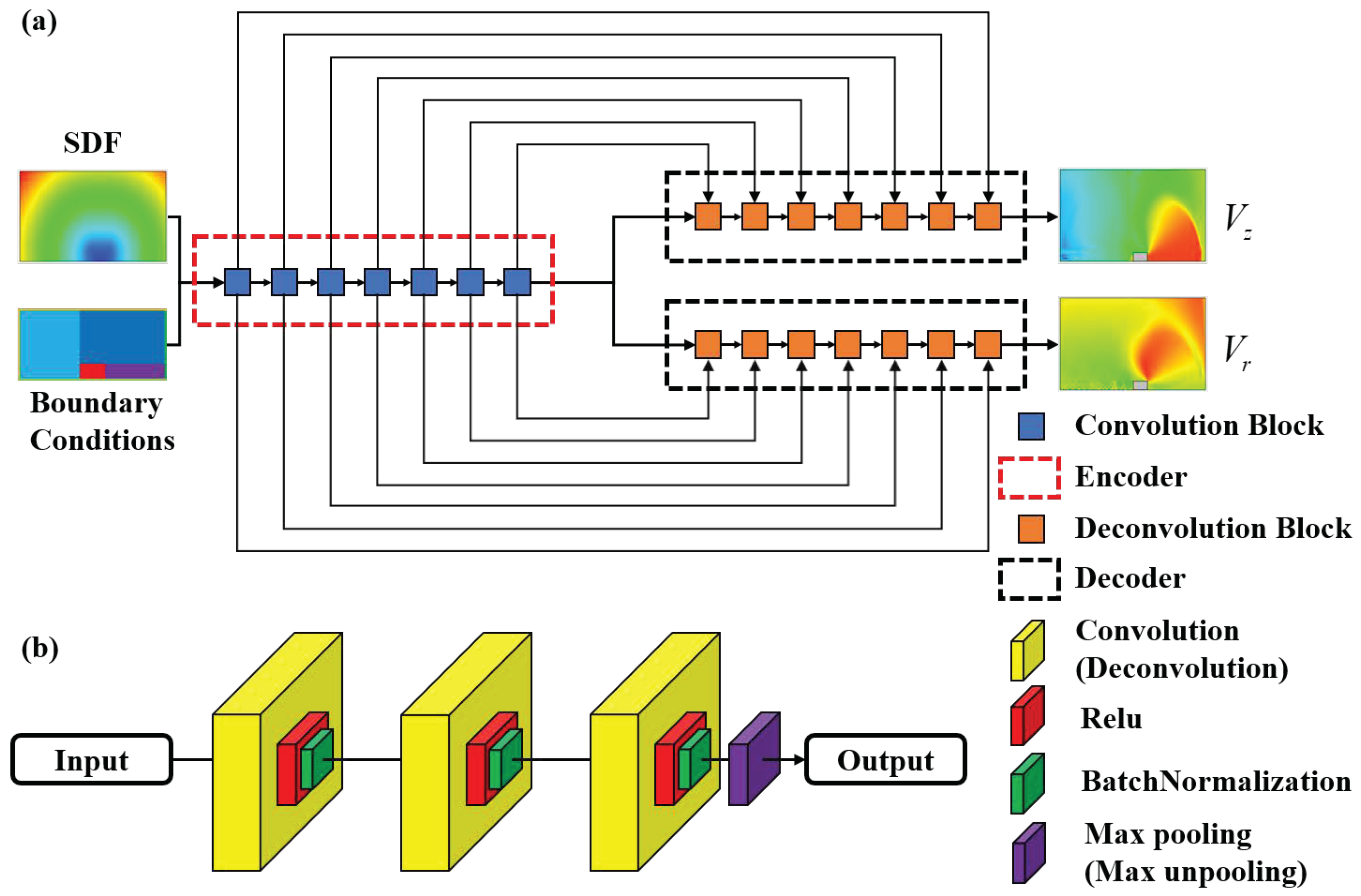


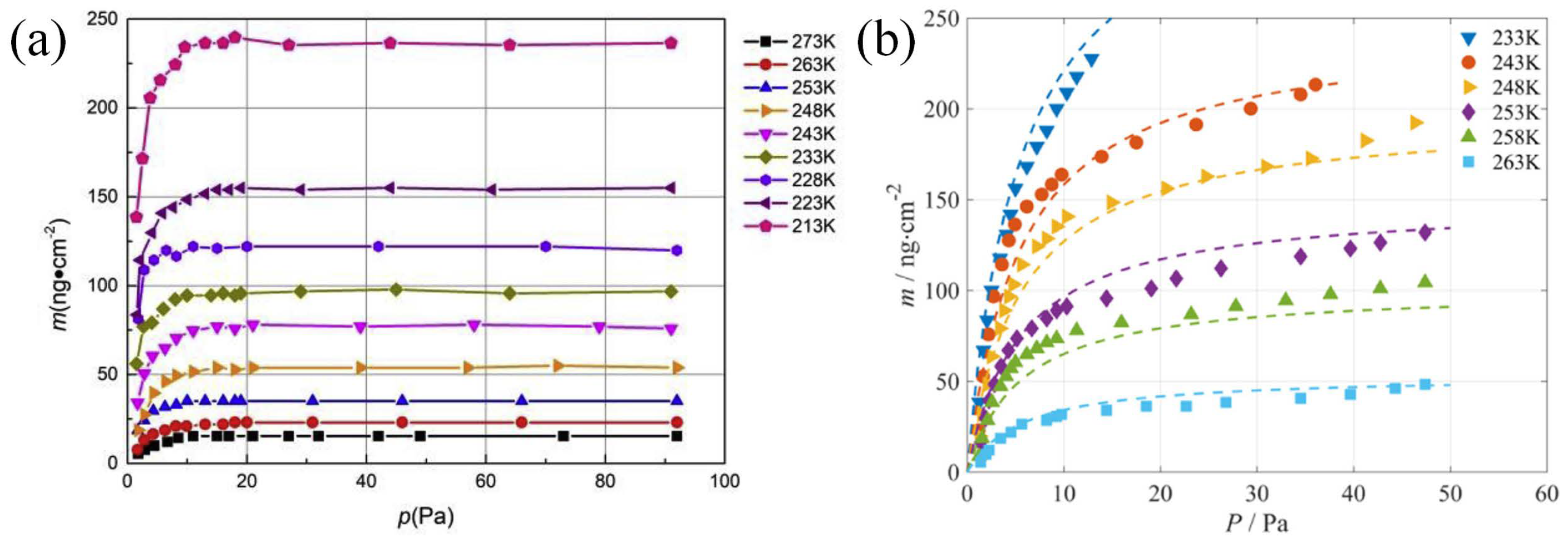


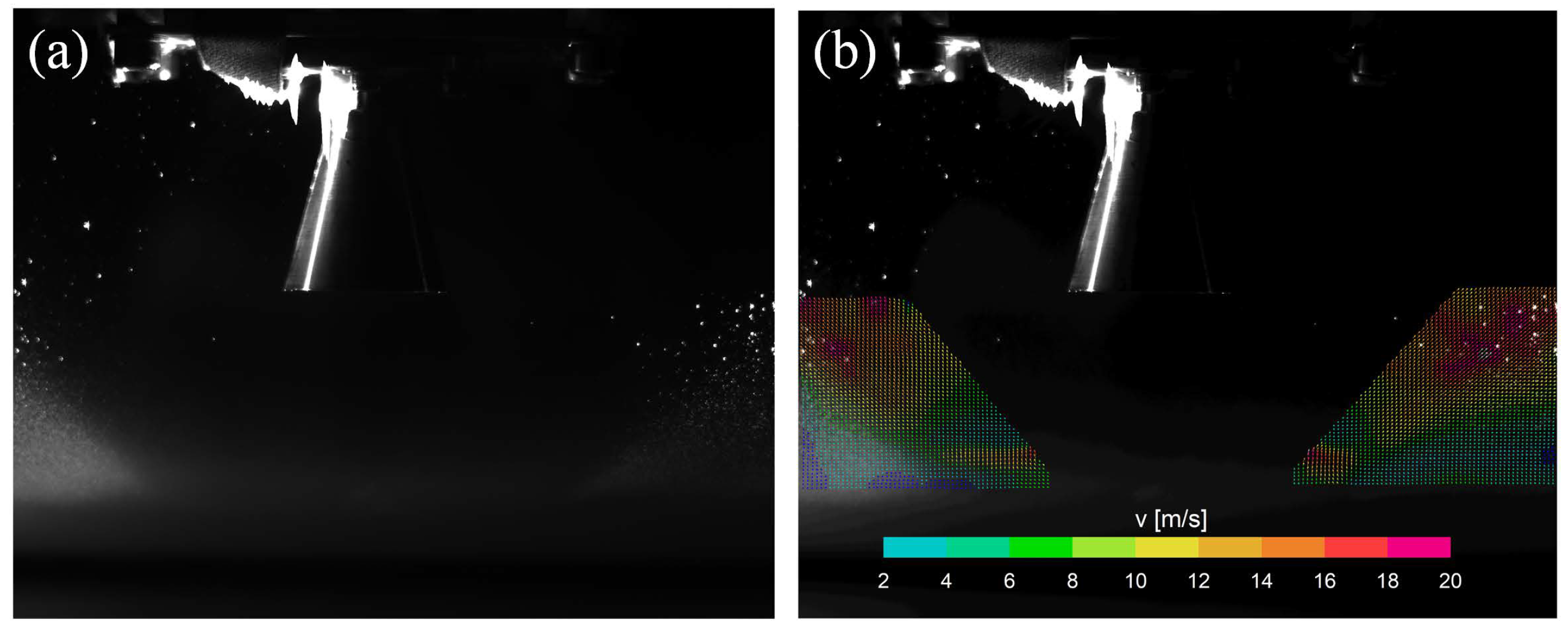
Publisher’s Note: MDPI stays neutral with regard to jurisdictional claims in published maps and institutional affiliations. |
© 2022 by the authors. Licensee MDPI, Basel, Switzerland. This article is an open access article distributed under the terms and conditions of the Creative Commons Attribution (CC BY) license (https://creativecommons.org/licenses/by/4.0/).
Share and Cite
Cai, G.; Liu, L.; He, B.; Ling, G.; Weng, H.; Wang, W. A Review of Research on the Vacuum Plume. Aerospace 2022, 9, 706. https://doi.org/10.3390/aerospace9110706
Cai G, Liu L, He B, Ling G, Weng H, Wang W. A Review of Research on the Vacuum Plume. Aerospace. 2022; 9(11):706. https://doi.org/10.3390/aerospace9110706
Chicago/Turabian StyleCai, Guobiao, Lihui Liu, Bijiao He, Guilong Ling, Huiyan Weng, and Weizong Wang. 2022. "A Review of Research on the Vacuum Plume" Aerospace 9, no. 11: 706. https://doi.org/10.3390/aerospace9110706





